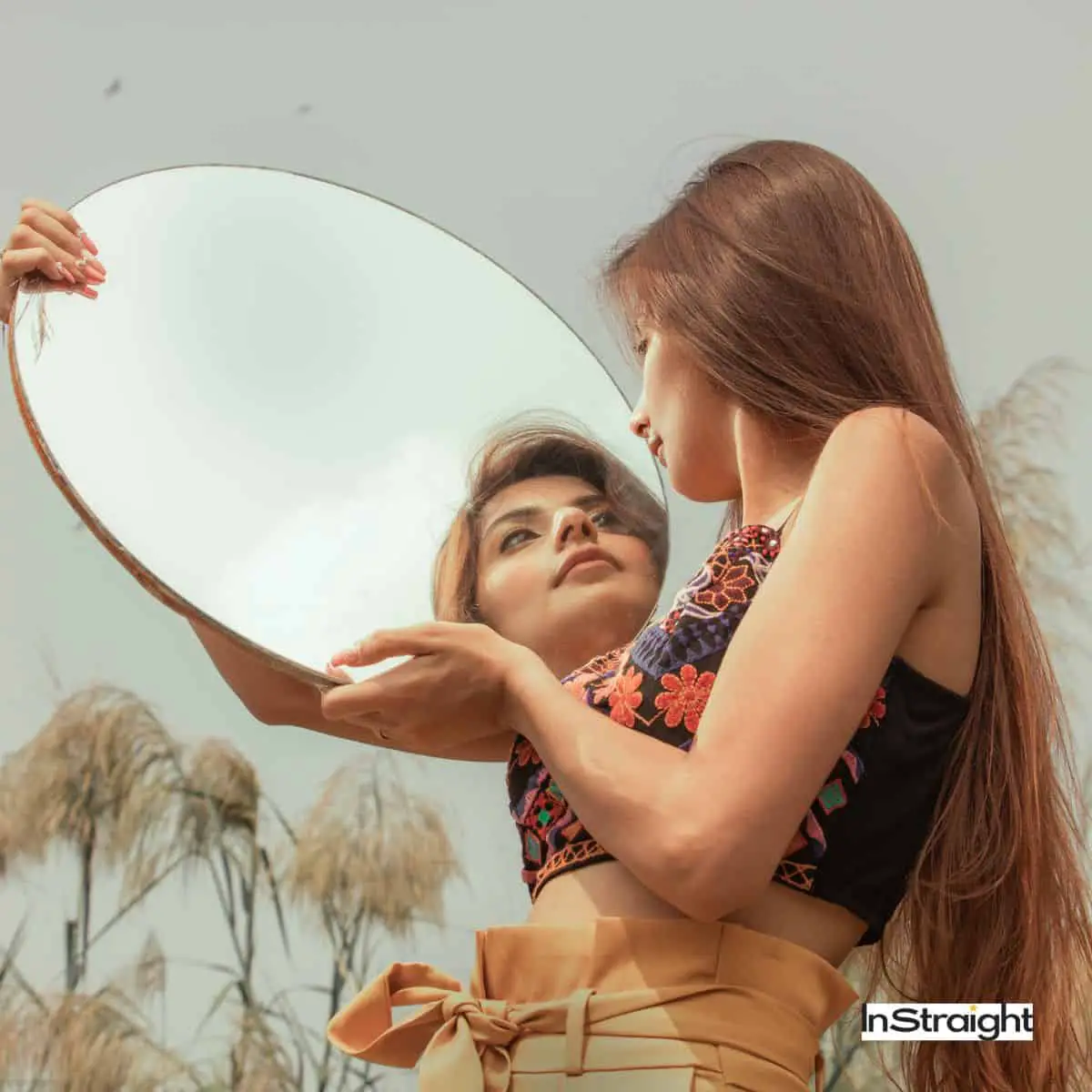We all know the importance of a mirror. It is one of the most basic tools we use in our day-to-day lives. But what happens when you’re not sure if the mirror you’re looking at is accurate?
One quick and easy way to check if a mirror is accurate is to hold up a ruler or straight edge next to the reflection. If the object in the reflection lines up perfectly with the object in real life, then you know the mirror is accurate.
In this guide, I will teach you how to know which mirror is accurate. I’ll also provide tips on finding the best mirror for your needs so that you can always look your best!
Key Takeaways
- There are different types of mirrors, each with its accuracy.
- Some factors can affect the accuracy of a mirror, such as the material it is made of, the mirror’s surface, and the mirror’s size.
- Your distance from the mirror can also affect its accuracy.
Reflection And Mirrors
As we all know, mirrors are reflective surfaces that produce images of objects in front of them. The angle between the mirror and the object will determine how the image is REFLECTED.
If the object is placed PERPENDICULAR to the mirror, the image will be reflected at the same angle [1]. This is why you can see your entire reflection in a mirror if you stand in front of it.
However, if the object is NOT placed perpendicular to the mirror, the image will be reflected at a different angle. This is why our reflection appears smaller or larger in various mirrors.
How Accurate Are Different Types of Mirrors?
Mirrors are one of the most common household items and come in various shapes and sizes. But did you know that not all mirrors are created equal? In fact, the type of mirror you use can significantly impact its accuracy.
Here is a list of the most common types of mirrors type and their accuracy:
1. Glass Mirrors
Glass mirrors are considered to be the most accurate type of mirror. This is because glass is a very smooth material that produces a clear reflection.
2. Plastic Mirrors
Plastic mirrors are not as accurate as glass mirrors, but they are still reasonably accurate. This is because plastic is not as smooth as glass and can produce a slightly distorted reflection.
3. Warped Mirrors
Warped mirrors are highly distortive and should be avoided if you are looking for an accurate reflection. Warped mirrors are often found in funhouses or carnivals.
4. Flat Mirror
The most common type is the perfectly flat mirror, typically used in bathrooms and bedrooms. These mirrors provide an excellent overall view but may DISTORT certain features, such as the nose or chin.
5. Concave Mirror
For a more accurate reflection, some people prefer to use a concave mirror, which curves inward [2]. This type of mirror does not distort features but may make objects appear SMALLER than they are.
6. Convex Mirror
Finally, there is the convex mirror, which curves outward. These mirrors are often used in hallways or entryways as they provide a wider field of view [3]. However, they can also distort images, making objects appear LARGER than they are.
READ MORE: The 12 Best Lighted Wall Mirrors
6 Factors That Affect Mirror Accuracy
A few factors can affect a mirror’s accuracy, such as the type of material it is made from, its surface, and the mirror’s size.
Take a look at these factors below to learn more about how they can affect a mirror’s accuracy.
1. Material
One factor that can affect mirror accuracy is the material the mirror is made of. Glass mirrors are typically more ACCURATE than plastic mirrors, as they have a smoother surface that doesn’t warp or distort reflections.
Warped mirrors, such as a funhouse mirror, are the least accurate type of mirror as they can completely distort your reflection.
2. The Surface of The Mirror
Another factor that can affect accuracy is the surface of the mirror. If the mirror is WARPED or distorted in any way, the reflection will likely be distorted.
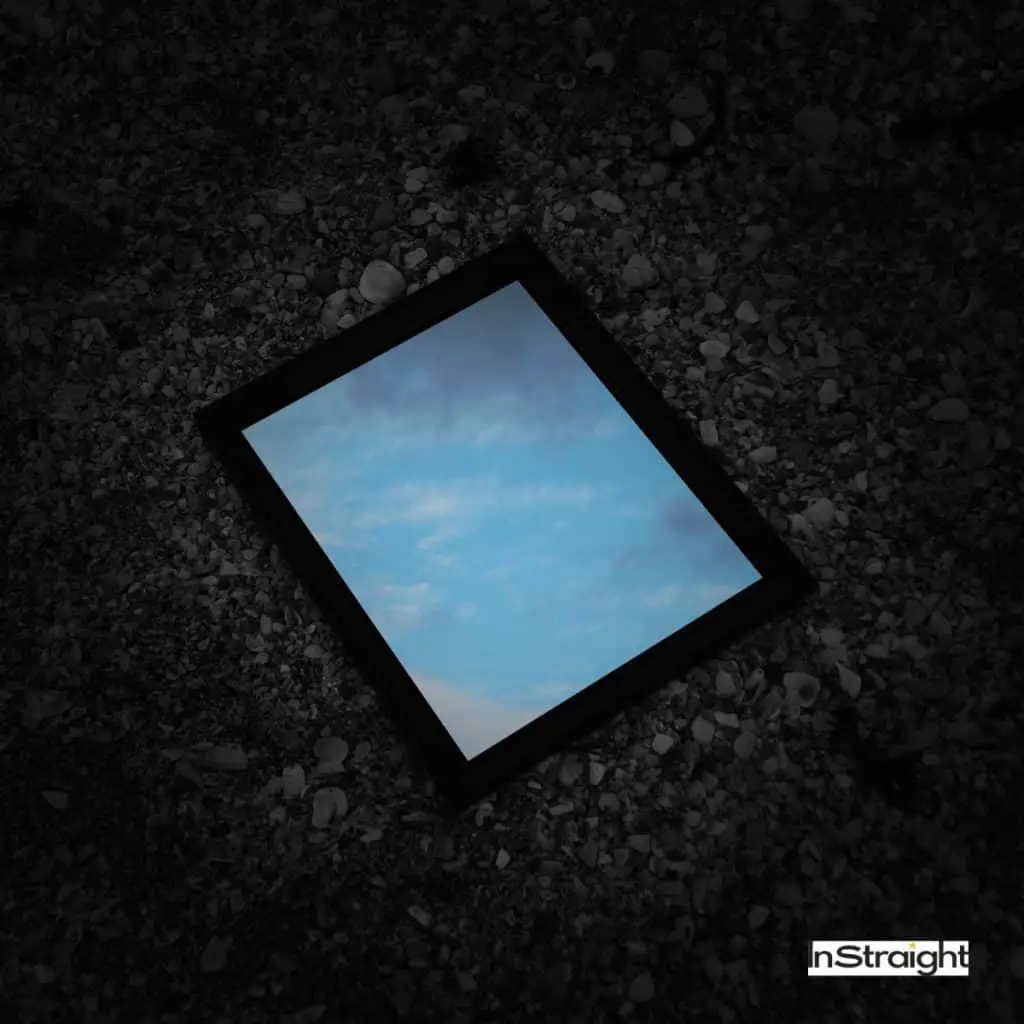
It’s best to choose a mirror with a smooth, even surface for the most ACCURATE reflection possible.
Pro Tip: Inspect the mirror’s surface before buying it to ensure it is smooth and even.
3. Size
The size of the mirror can also affect its accuracy.
Smaller mirrors tend to be more accurate than larger ones, as they have LESS surface area that can distort reflections.
4. Your Distance from the Mirror
The final factor to consider is your distance from the mirror. If you are too CLOSE to the mirror, your reflection will appear larger than it is.
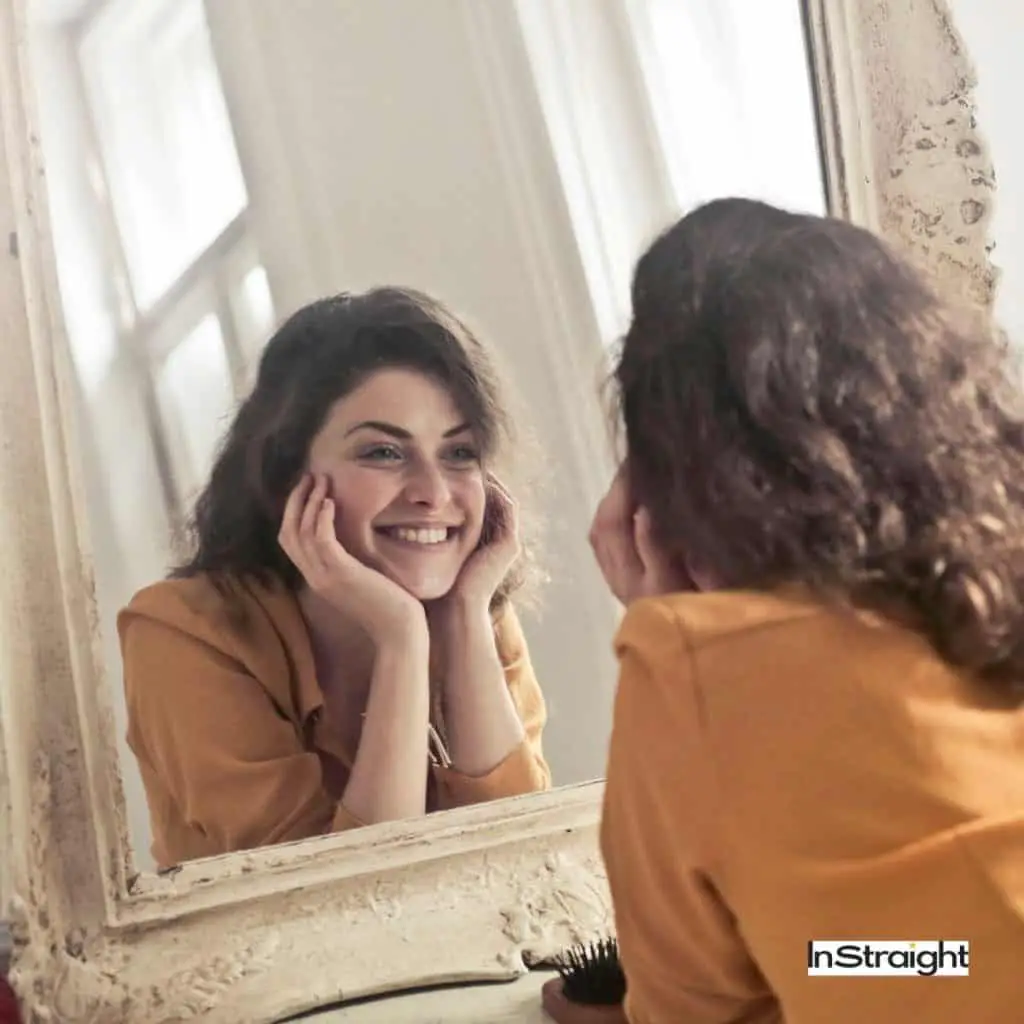
On the other hand, if you are too FAR away from the mirror, your reflection will appear smaller. The mirror’s accuracy is also affected by the angle at which you view it. For the most accurate reflection, stand PERPENDICULAR to the mirror and view it head-on.
For example, if you’re looking in a bathroom mirror, you will need to stand closer than if you were looking in a full-length mirror. Standing the same distance away from both types of mirrors will give you a DISTORTED view in the bathroom mirror and an accurate view in the full-length mirror.
Pro Tip: For the most accurate reflection, use a small flat glass mirror and stand perpendicular to it at a distance of 1 foot (30 cm).
5. Lighting
The type of lighting in the room can also affect how accurately a mirror reflection appears.
For example, if you look in a bathroom mirror lit by fluorescent light, your skin may appear to have a greenish tint. This is because the light reflects off the mirror and onto your face.
It can also create shadows that aren’t actually there, which can distort your facial features. If you want to see an actual mirror image of yourself, it’s best to use a mirror that is lit by natural light.
Pro Tip: For the most accurate reflection, use a room with plenty of natural light.
6. The Shape of The Mirror
If you want to look thinner in pictures, your image must be squished horizontally or stretched vertically. Most mirrors warp over time from top to bottom. If viewed from the side, there’s a slight curve along the edge.
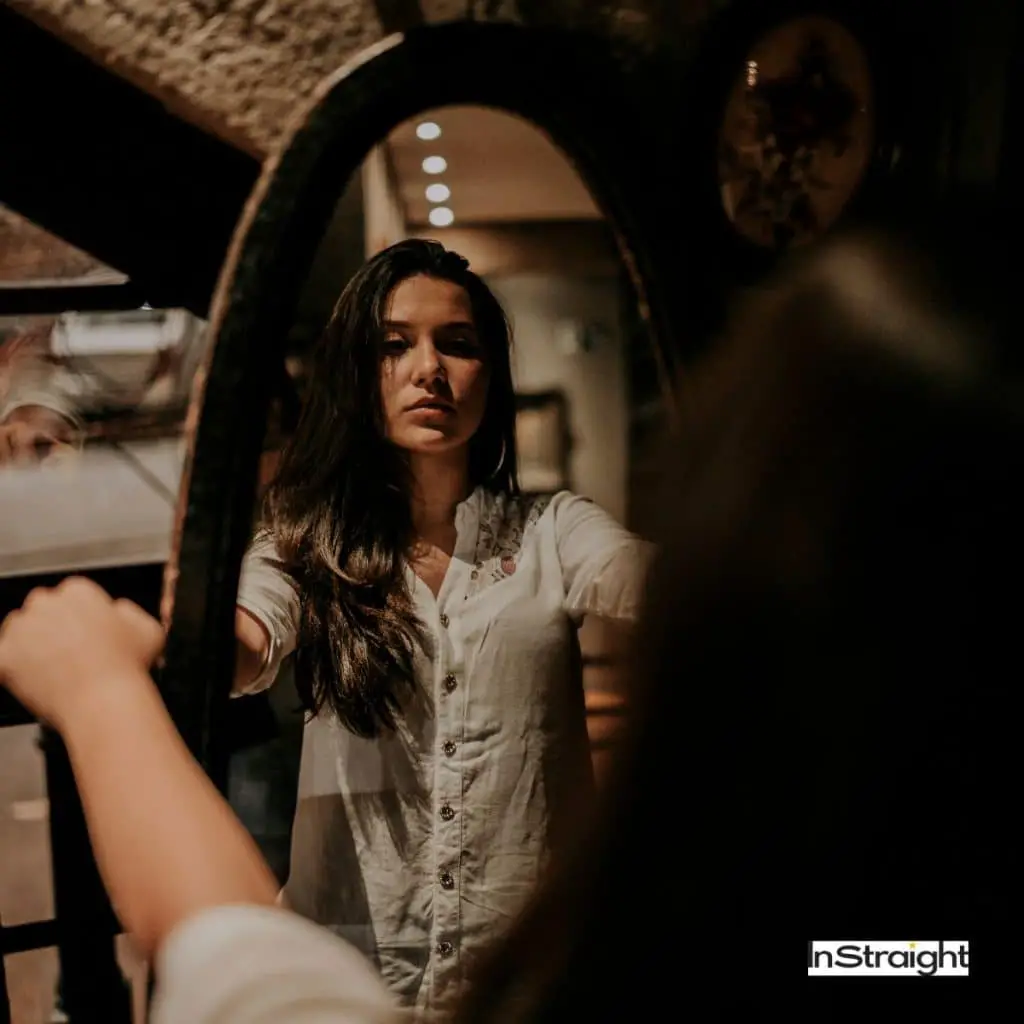
Usually, a home mirror’s top and bottom edges are straight because of their weight. If the center sticks out slightly, you’ll appear shorter, but your width won’t change.
Remember, no perfect mirror will give you a 100% accurate mirror image. However, by considering the factors mentioned above, you can choose a mirror that will come close. Just remember to inspect the mirror before buying it to ensure it meets your accuracy needs.
Related: Which Shape Mirror is Good for Bathroom?
How to Check If a Mirror Is Accurate
Now that we know the different types of mirrors and how they can affect our reflection, let’s talk about how to check if a mirror is accurate.
1. Ruler Test
One way to test a mirror’s accuracy is to use a ruler. Hold the ruler PERPENDICULAR to the mirror and line up the 0 mark with your reflection’s nose.
If the mirror is accurate, the reflection of the ruler should appear STRAIGHT. If the ruler appears distorted in any way, then the mirror is not accurate.
2. Eye Test
Another way to test a mirror’s accuracy is to use your eyes. Hold your hand up to the mirror and line up your thumb with your reflection’s nose.
If the mirror is accurate, your reflection’s thumb should be in the SAME place as your actual thumb. If not, then the mirror is not correct.
3. Water Test
Another way to test a mirror’s accuracy is to use water. To do this, fill a cup with water and hold it to the mirror. If the mirror is accurate, the water in the cup should appear STRAIGHT. If not, then the mirror is not accurate.
4. Check Different Angles
When checking a mirror’s accuracy, it’s essential to check from different angles. This is because mirrors can be more ACCURATE in some positions than others.
To do this, stand at DIFFERENT distances from the mirror and view your reflection from different angles. The mirror is inaccurate if the reflection looks distorted at any angle.
5. Asking For Help
Finally, you can also ASK a friend or family member to help you check the accuracy of a mirror. They can stand next to you and compare your reflection to theirs.
Pro Tip: If you don’t have anyone to help you, you can use a photo of yourself as a reference. Line up the photo next to your reflection to see if they match up.
Mirrors Vs Cameras
Have you ever taken a picture of yourself and noticed that you look different in the photo than you do in the mirror?
This is because mirrors and cameras reflect light in DIFFERENT ways.
Mirrors reflect light in a way that creates an INVERTED image, while cameras make a non-inverted image. So, when you look at yourself in a mirror, your left side will appear on the right side of the reflection, and vice versa.
However, when you take a picture of yourself, the image will appear the same as in real life. Keep this in mind when you are checking the accuracy of a mirror – the reflection may be different than what you are used to seeing in photos.
READ MORE
FAQs
Are Accurate Mirrors More Expensive?
No, accurate mirrors are not necessarily more expensive. However, the factors that affect a mirror’s accuracy (such as size and material) can affect its price.
What Is The Most Accurate Mirror?
A concave mirror can provide a much more accurate reflection than either a flat or convex mirror, but it can also create an exaggerated sense of depth.
Ultimately, the best type of mirror for any given situation depends on the user’s specific needs.
Conclusion
Although there’s no foolproof way how to know which mirror is accurate, understanding a little bit about how mirrors work can help you make a more informed decision.
Now that you know a few things to look for, choose the mirror that will accurately reflect yourself and help you feel confident in your appearance.
After all, feeling good about how you look is what matters – not what some randomly chosen mirror says.
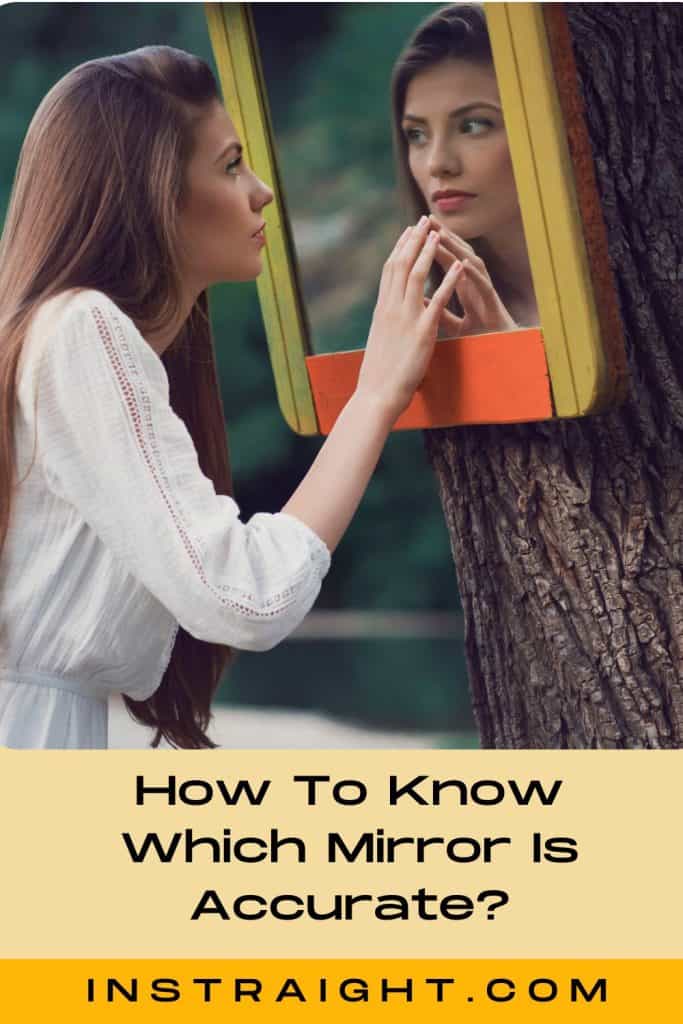
Did you find the guide helpful? Let us know in the comments section!
resources
- 1. The Physics Classroom. The Law of Reflection [Internet]. Physicsclassroom.com. 2019. Available from: https://www.physicsclassroom.com/class/refln/Lesson-1/The-Law-of-Reflection
- 2. Reflection and Mirrors Review – Answers #1 [Internet]. www.physicsclassroom.com. [cited 2022 Nov 28]. Available from: https://www.physicsclassroom.com/reviews/Reflection-and-Mirrors/Reflection-and-Mirrors-Review-Answers-1
- 3. What is a convex mirror?A.) Curved or bowed outward like outside of a bowl or sphereB.) Curved like inner surface of a bowl or sphereC.) Curved inwardD.) None [Internet]. www.vedantu.com. [cited 2022 Nov 28]. Available from: https://www.vedantu.com/question-answer/a-convex-mirror-a-curved-or-bowed-outward-like-class-10-physics-cbse-5f1f744e227f0426c0c27e2d
- About the Author
- Latest Posts
Lusine is a fresh young writing enthusiast who loves to share tips about beauty, skincare, and so many other things. When she’s not writing, you can find her snuggled up with her dog Benji binging on Netflix. She’s also into cooking and yoga. Follow her on FACEBOOK and TWITTER. Learn more about her HERE.
